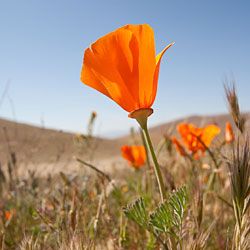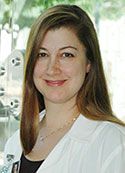- About
- Organization
- Organization Overview
- Dean’s Office
- Department of Bioengineering and Therapeutic Sciences
- Department of Clinical Pharmacy
- Department of Pharmaceutical Chemistry
- Quantitative Biosciences Institute
- Org Chart
- Research
- Education
- Patient Care
- People
- News
- Events
Pharmacy school program aims to increase pharmacists in California’s Central Valley
By UCSF School of Pharmacy Editorial Staff / Fri Jul 16, 2010

With the next school year only 2 months away, a UCSF School of Pharmacy program to encourage eligible high school students from the California Central Valley to pursue pharmacy careers enters its 4th year.
The Early Conditional Admissions Program (ECAP) is designed to help Central Valley students from 3 high schools proceed and succeed along the path from high school to UCSF pharmacy school. The students first participate in the Doctors Academy, which is a challenging school-within-a-school for students interested in health professional careers. They complete the Academy, graduate from high school, and—as high school seniors—apply to and are accepted to the ECAP program. Then they attend a college or university, meet specific requirements, and apply to pharmacy school at UCSF. ECAP participants are guaranteed early admission to UCSF’s doctor of pharmacy (PharmD) program if they meet certain criteria.
The ECAP program is run by Mitra Assemi, PharmD, a UCSF School of Pharmacy faculty member based in Fresno, California.
Mitra discussed the fledgling program and its purpose in this interview with Susan Levings, MS, UCSF School of Pharmacy associate dean of planning and communications.

Mitra Assemi, PharmD
Levings: Why create a pipeline of student pharmacists from the California Central Valley?
Assemi: There’s a huge need. In 2008, California ranked 43rd in the United States in the number of pharmacists per people in the state.
Levings: What’s the ratio?
Assemi: It’s 66 pharmacists to every 100,000 Californians.[1]
But the statewide numbers don’t reflect the whole situation in the Valley where there is both a severe shortage of pharmacists—in fact a severe shortage of all health care professionals—and a pharmacy workforce that doesn’t proportionally mirror the demographics of the population.
Consider this for a minute—9 out of every 10 pharmacists in California is either White or Asian, but more than 1 out of every 3 Californians is Latino.[2]
Providers need to understand and relate to patients in order to gain their trust and communicate effectively. One way to do so is for provider and patient to share the same cultural and/or language background. Another is through diversifying the profession itself—bringing students from all different backgrounds together to learn and train. Doing so helps all students enhance their awareness and knowledge of different cultures. In turn, the students grow into pharmacists who are better able to understand and serve the population’s health care needs.
If we’re going to address—redress—today’s persistent health disparities we need more pharmacists and more pharmacists who represent the population of the Central Valley.
Fresno is currently the 5th-largest metropolitan area in California and very ethnically diverse. Almost one in every 2 individuals speaks a language other than English at home.[3] The healthcare needs of our population are dire. As one example, 1 in every 10 people in Fresno country has diabetes (in contrast to 1 in every 13 people across California) and nowhere in California are people more likely to die from diabetes.[4] This area needs healthcare providers that understand the backgrounds of the patients in the area and can work effectively across differences to provide care and services and eliminate health disparities.
Levings: Why is the UCSF pharmacy school focusing this Early Conditional Admissions Program in the Valley and not in another region of the state?
Assemi: The School has had a strong presence in the Central Valley for a long time. In 1997, we incorporated the local poison center at the Children’s Hospital of Central California in Madera into the California Poison Control System—and it’s now the largest single provider of poison control services in the United States.
In 2001, we established a full-time training site in Fresno for our doctor of pharmacy students to get advanced clinical training in their 3rd and 4th years of pharmacy school. Although we have 4 other training sites in California, the demographics in Fresno are very important for clinicians who will practice in California to understand.
I think the fact that we are here to stay shows our commitment to meeting the needs of underserved groups in this part of the state.
It would be fantastic if we ever had the resources to expand this effort beyond the Valley. But let’s succeed here first!
Levings: What’s been the response from high school students about pharmacy as a health care career option?
Assemi: The responses are typical, not just of high school students, but of the general public. When asked to describe what a pharmacist does, most people think of dispensing medicine. Students are no different. But they’re always surprised to learn that pharmacists are trained to do both this and much more.
The students I’ve met with in the Doctors Academy are amazed when I explain that pharmacists are not only the drug experts but also the health care providers who patients see most often. I explain that pharmacists focus on sharing their expertise with others—patients, families, and other health care providers such as doctors and nurses.
They start to appreciate how pharmacists are part of a larger health care team focused on keeping patients healthy and managing chronic conditions safely and effectively. But this really doesn’t hit home until they participate in job shadowing and are paired with local pharmacists. Every year we see freshmen with little to no knowledge of who pharmacists really are and what pharmacists are trained to do make this transformation to seniors who decide they want to pursue pharmacy as a career.
Levings: Is that your job, then, to share the possibilities of a pharmacy career?
Assemi: The ECAP portion of my job involves a lot of things, but at the end of the day, yes. I make sure the Doctors Academy students have heard about all of the options with the hope that, with this information, many will meet our criteria, apply to ECAP, and be accepted. After graduation from the Doctors Academy and high school and acceptance to ECAP, there’s undergraduate school, more criteria to meet, application to the UCSF doctor of pharmacy program…a long haul, but it starts with inspiration.
Levings: Explain “inspiration,” if you would.
Assemi: It’s so important for students to see themselves in the profession—to imagine themselves as pharmacists doing specific things. Plus it’s important for them to know that pharmacy is a cool profession with a lot of choices.
When asked where a pharmacist works, students will say the neighborhood pharmacy or some will say the hospital. They are really intrigued to hear about—and most importantly, witness—pharmacists in action in other settings as well.
They see that pharmacists work alongside doctors and nurses in our largest and busiest emergency room. They see that pharmacists meet with patients who are referred to them by their doctors. They see that pharmacists advise frantic parents who call about a possible poison their child just drank or that pharmacists manage medicines for premature babies in a neonatal intensive care unit within the Children’s Hospital. They see that pharmacists advise physicians on the best way to treat a difficult infection in a hospitalized patient.
I also explain that beyond community and hospital pharmacies and poison control centers, pharmacists work in government, industry, professional organizations, the military.
My hope is that students can image themselves in these settings and are inspired to pursue the field.
Levings: Once ECAP students meet all of the criteria and are accepted to the UCSF pharmacy school, what is required of them to actually graduate and practice pharmacy?
Assemi: Our PharmD degree program is 4 years long. Pharmacy students must successfully complete course requirements in both the classroom and real-world practice settings in order to graduate. Pharmacy students from the Central Valley can return to the Central Valley for their last year of pharmacy school to complete their remaining graduation requirements.
Once they graduate and receive their PharmD degrees, they are eligible to take the state licensing exam. After passing the exam, they are ready to practice. Certain jobs may require an additional 1 to 2 years of specialized training, which is usually done after graduation and licensing.
Levings: How many ECAP slots have you planned for?
Assemi: As of 2010, we are able to accept 2 to 5 ECAP students a year.
Levings: Do the ECAP students you accept to pharmacy school take the place of other eligible applicants?
Assemi: No. ECAP students are admitted in addition to, and not in place of, all other applicants. This means we make extra room every year for a certain number of ECAP students to join the entering class of 122 students.
Levings: It is your hope that ECAP students will return to the Valley to practice?
Assemi: That’s our goal—home-grown pharmacists who understand the needs of the Central Valley population.
Levings: What kind of response have you received to the program?
Assemi: The program gets more and more competitive every year, which tells me just how recognized and valued it has become with students and families in the area.
So far we have 5 ECAP students now in college and, on average, 15 to 20% of our Doctors Academy students remain interested in pharmacy during their 4 years in high school.
This is a long-term process of educating and enlightening high school students and their parents about pharmacy as a career and our ECAP program. The standards all along the way are extremely high, and I am confident that as we can share stories of Valley pharmacists who have come through the pipeline, our success will lead to more success.
References
- Advisory Council on Future Growth in the Health Professions: Final Report (PDF, 67 pages, 17.6 MB), University of California, Office of Health Affairs, January 2007, page 33.
- Diversifying California’s Healthcare Workforce, an Opportunity to Address California’s Health Workforce Shortages (PDF, 34 pages, 592 KB), Healthcare Workforce Diversity Advisory Council to the Administration of Governor Arnold Schwarzenegger, May 2008, pages 5 (1), 9 (5), 11 (7).
- Fresno County, California, State & County QuickFacts, United States Census Bureau. Accessed July 15, 2010.
- Central Valley hard-hit by diabetes epidemic. Anderson B and Shulyakovskaya N. February 14, 2009. Accessed July 15, 2010.
More
- [Early Conditional Admissions Program][link defunct]
- Doctors Academy
- Central Valley (California)
Tags
Keywords:
Category:
Sites:
School of Pharmacy, PharmD Degree Program
About the School: The UCSF School of Pharmacy aims to solve the most pressing health care problems and strives to ensure that each patient receives the safest, most effective treatments. Our discoveries seed the development of novel therapies, and our researchers consistently lead the nation in NIH funding. The School’s doctor of pharmacy (PharmD) degree program, with its unique emphasis on scientific thinking, prepares students to be critical thinkers and leaders in their field.



